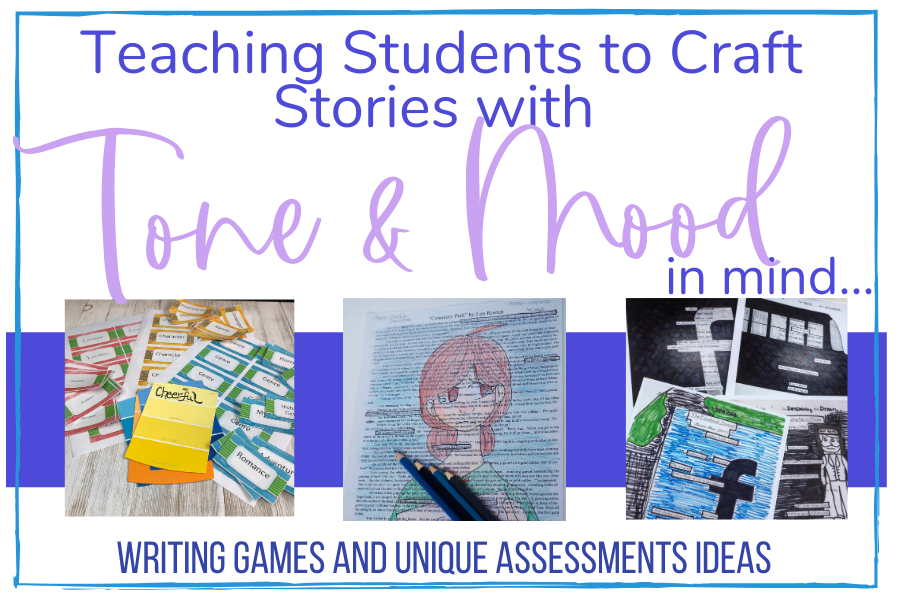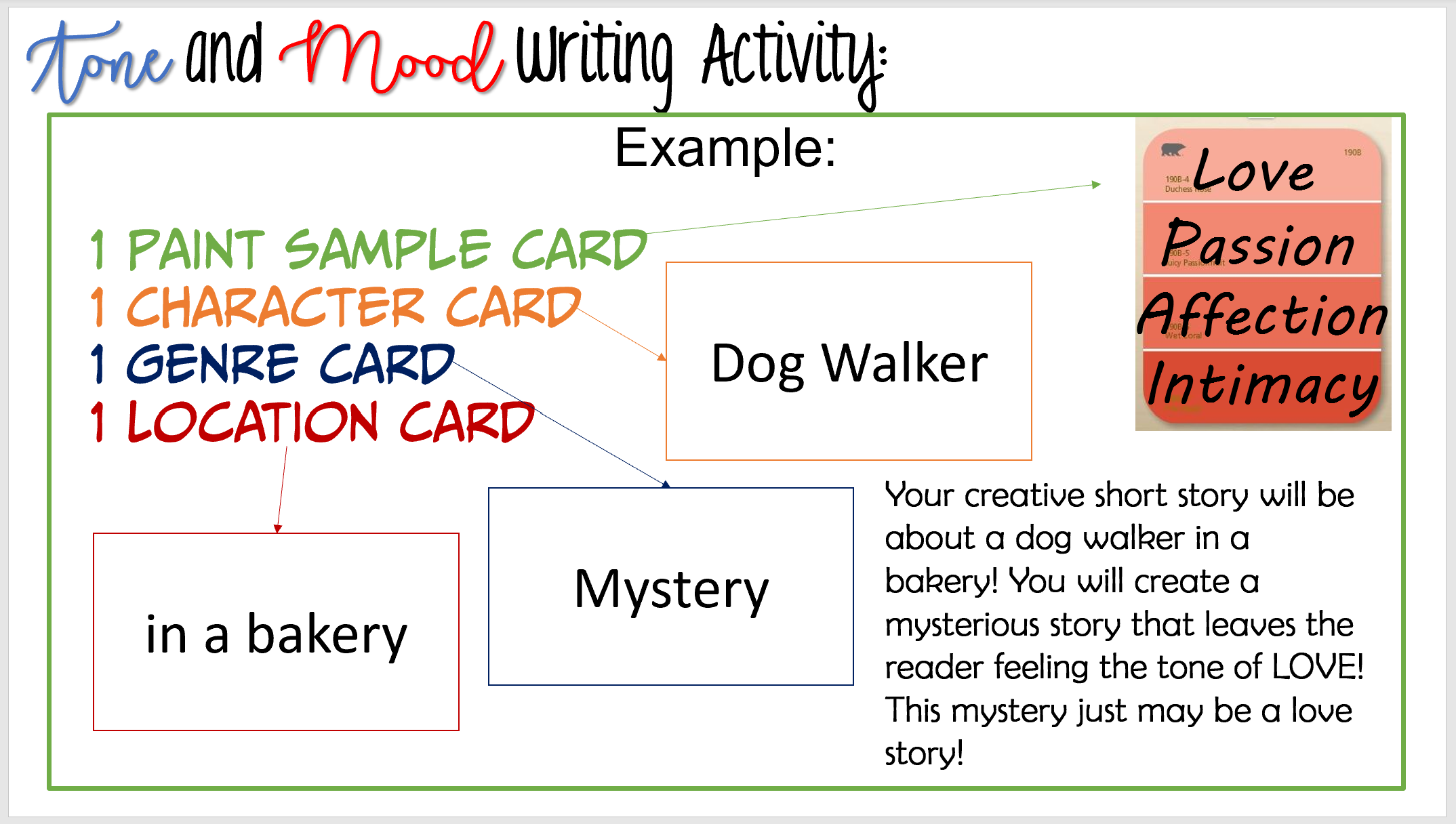Tone and Mood Writing - Writing Games and Unique Assessments to Teach Tone and Mood
Getting students to fully grasp the concept of tone and mood can be a truly difficult and daunting task. Students can have a very difficult time separating the mood they feel while reading from the author’s tone while writing. It can be even more challenging for students to think about the mood they wish a reader to feel while they are writing, which can require them to disregard their own tone.
Before we can get students to write for their reader and consider the mood they will establish with their final product, we must first teach them this challenging topic.
To be successful in identifying an author’s tone, we need to allow students to explore many mentor texts to identify tone and mood. It is important that students look deeply at a variety of texts and break down the meaning at the word choice level. Exploring a text with this depth is perfect for blackout poetry. More to come on this unique assessment for tone and mood…
Getting started…
To begin my tone and mood unit, I first delve into connotation vs. denotation. Students explore the emotion behind words, as this emotion will guide us toward analyzing the author’s tone. After introducing tone and mood to my students, I show them how the connotation and denotation behind the words the author chooses actually reveals the tone to us as readers.
After exploring tone and mood in a variety of ways and through a variety of texts within the unit, I ask students to demonstrate their understanding of connotation, denotation, tone, and mood with this blackout poetry assessment.
The Unique Blackout Poetry Assessment:
First, I ask students to analyze a short story or poem. I love using “Cemetery Path” by Leonard Ross for this purpose. This story is perfect for its brevity (it can fit nicely onto one page), and for its incredible mood. I also love how the tone and the mood can be so contrasting with this piece. I often remind my students that an author’s tone and the reader’s mood can be very different. This is a great story to exemplify this concept!
I have also asked students to analyze poetry for its tone. I have used both “My Father Teaches Me to Dream” by Jan Beatty, and “The Facebook Sonnet” by Sherman Alexie. These both have a distinct tone that students seem to relate to and connect with as they complete the assessment.
Then, students begin by identifying the author’s tone and the reader’s mood. Then they put a box around the words and phrases that identify the author’s tone within the text. Finally, students draw the mood of the piece over the text. They cover the entire text, leaving only the tone words and phrases visible to the viewer. Blackout poetry uses simply black ink to cover the text, but I have allowed students to use color in their images. They make for a beautiful bulletin board!
Moving students to writing with a particular tone/mood in mind…
I have created a fun short story game to get students practicing this skill as authors. To start, I hand students a paint chip card from the local hardware store. (I go to Home Depot and speak to the paint specialists before taking enough cards for each student. I offer to pay for these cards. At most, I have paid a few dollars for these cards, but often they will allow me to select them for free.) I ask students to identify the emotion/tone they feel when the see the top color on this card. The red card for example could elicit an emotion of love or anger. Then students create synonyms for this emotion in the remaining colors. I explain that students will use these synonyms to draft their short story.
There is a bit of pre-prep with this activity. You will need to create game cards in the following three categories: Characters, Locations, and Genres of writing. You can grab these in my Tone and Unit bundle if you would prefer to have them ready to go. Then, I have students select one card from each category.
A student may select:
- A Character Card – Dog Walker
- A Location Card – in a bakery
- A Genre Card – Mystery.
When combined with their tone paint chip card, students will then write a mystery story about a dog walker in a bakery! They must elicit the tone from their paint chip throughout the story.
When students are finished with this activity, I ask them to swap stories. I challenge students to identify the tone in their peer’s written work, and students can self-assess if they were successful in establishing a certain tone/mood in their writing.
Students have really loved this activity over the years, they even ask if we can “play again” when time allows. If you would like to grab this entire tone and mood unit, click on the image below!
About the Author
Liz is the founder of Teach BeTween the Lines. She has been teaching for over ten years; she has loved growing young minds through literature and the art of crafting the written word. She is currently working on her doctorate in Education from the University of Minnesota, and holds an M.A. in Education from St. Mary’s University, Minnesota. She loves to write short stories in her free time, especially in those cold Minnesota winters. She is supported by a wonderful family made better by the addition of her two beautiful children.









